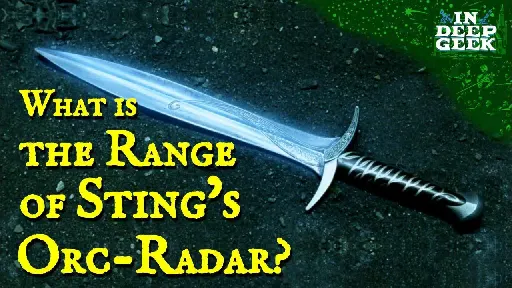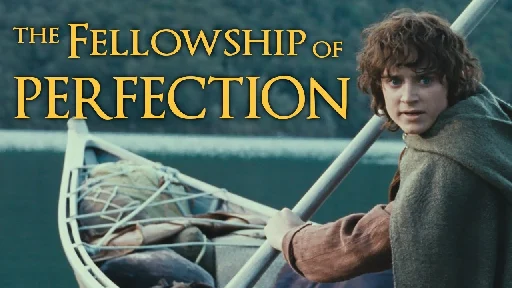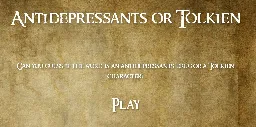
Tolkien, Lord of the Rings (LotR) & more
- Rings of Poser Season 2 Teaserarstechnica.com Sauron’s dark rise is front and center in The Rings of Power S2 teaser
Plus a bonus behind-the-scenes featurette catching us up on all the characters.

Nice teaser. Still comes across to me more as fanfic. I wish we were getting a Silmarillion anthology adaptation, but alas, that may not happen in this universe.
I’m glad the books and original movies exist.
What do others think?
- Bernard Hill, who played Theoden in the LotR movies, has diedwww.bbc.com Bernard Hill: Titanic and Lord of the Rings actor dies
His fellow actors from the 1997 Oscar-winning film pay tribute to a star whose career spanned decades.
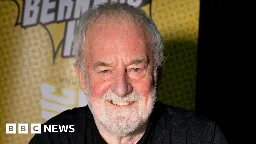
Theoden's redemption arc across the second and third movie was one of the most fascinating side-stories for me, and Bernard Hill portrayed him in all stages brilliantly with range and nuance.
May he rest in peace.
- Exclusive: The Hobbit's Richard Armitage looks back on playing Thorin Oakenshield 11 years after its releasewww.hellomagazine.com Exclusive: The Hobbit's Richard Armitage looks back on playing Thorin Oakenshield 11 years after its release
12 December marks the 11th anniversary of The Hobbit's UK release
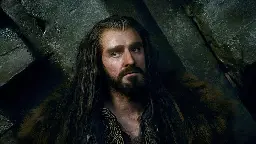
>"I have the map and the key to the mountain that was used in the film in a frame," he notes. "And I have Thorin's sword and his oaken shield. It's on my bookshelf!"
Eleven years ago, Tolkienites rejoiced as The Hobbit: An Unexpected Journey landed in UK cinemas. With Lord of the Rings director, Peter Jackson, at the helm, a legion of actors including Martin Freeman, Ian McKellen, Cate Blanchett, and Orlando Bloom signed on to star.
Joining them, British actor Richard Armitage won the role of Thorin Oakenshield – the legendary King of Durin's folk. Determined to reclaim the Lonely Mountain from Smaug, and secure the coveted Arkenstone, Thorin's redemptive story of greed made him one of the most interesting characters in the trilogy.
Reflecting on The Hobbit's enduring legacy and the profound effect that the franchise had on him, Richard, 52, spoke exclusively to HELLO! about his time on set.
On why the role of Thorin was so special to him, Richard explained: "It had an impact on me because I think The Hobbit was one of the first books I ever read where I really allowed my imagination to engage.
"I was completely absorbed by Tolkien. Then I found Lord of the Rings and I think it was where my early feelers were going towards being an actor, but I didn't realise it at the time," he continued.
"So, when I came to playing Thorin Oakenshield as a 40-year-old, I was retracing my steps right back to being an eight-year-old in school and finding that book for the first time. So, it was just such a massive thing for me."
As for his time on set, Richard revealed a particularly poignant memory from day one of production.
"One of the fondest memories I had was on the very first day of shooting when Peter Jackson blessed his new sound stage with a Māori Haka. I had to speak Māori to the crew because they saw my character as the King of the Dwarves," he tells HELLO!.
"And so they asked me to make this speech in Māori and the door was lifted and the sun was rising across the floor and it was incredibly moving. It was a really special moment."
After wrapping the trilogy with The Hobbit: The Battle of the Five Armies (2014), Richard was able to take home a number of his most treasured possessions from the set, which he continues to cherish.
"I have the map and the key to the mountain that was used in the film in a frame," he notes. "And I have Thorin's sword and his oaken shield. It's on my bookshelf!"
After the success of the Lord of the Rings and The Hobbit, Tolkeinites have since entered the Rings of Power era, following the release of Amazon Prime's high fantasy series in 2022.
With the show renewed for a second season, naturally, we had to ask if Richard would be interested in a role of some sort. "I mean, I would love to, but I think it's very hard to do that. I'd have to be a different character because you couldn't bring Peter Jackson's version of Thorin Oakenshield into somebody else's. But I love the story," he said.
- Shire-reckoning
On occasion of yesterday's leap day, I remembered that Tolkien had devised his own calendar system, called Shire-reckoning, that I find very elegant.
Compared to our own calendar system it is more consistent and easier to memorize, since it maintains the same number of days in each month (and the Hobbits even managed to have a consistent weekday for any given day of the year), thanks to special days that are not assigned to a specific month. On leap years such as 2024, another such special day is inserted in mid-summer; so in a few months we'll have a so-called "Overlithe" in the middle of the Yule festival. Apart from its simplicity and elegance, this also seems like something a Hobbit's mind would come with - solving a problem by having one more day of festivals.
- The Wellermen - Misty Mountains (Official Video) ft. @LukasArnold1 @ColmRMcGuinness & More! [Full]

YouTube Video
Click to view this content.
- Has anyone been watching the Rings of Power show? Does anyone expect to watch it in 2024?
Just wondering. The show seems to be in kind of an… odd state. I only watched the first episode, didn’t love it, none of my friends expressed positive feelings..
… but it’s got pretty good critical reviews, it’s getting a second season this year, and honestly it often “looks good” from promotional material.
Is it worth giving a second shot? Is anyone looking forward to the second season?
- Lord of The Rings movie soundtrack, but in lo-fi beats fashion.
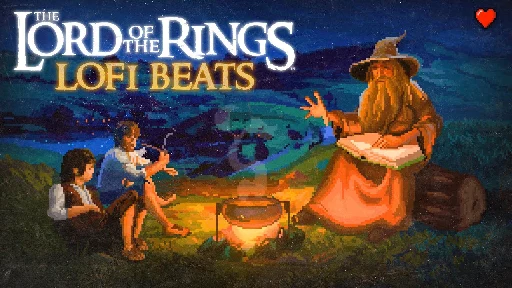
YouTube Video
Click to view this content.
If you're a fan of the soundtrack for the Lord of the Rings movies and also enjoy lo-fi beats, this is for you!
- ‘I left the cinema, walked home and announced I was moving’: films that made people emigrate | 'Middle-earth does exist'
> I was binge-watching the DVDs with my wife, Sarah, when it hit me: Middle-earth does exist, and I don’t need a portal. I can fly there in 23 hours. I turned to Sarah and said, “Shall we move to New Zealand?” One of the many things I love about my wife is that she listens to my madder ideas with a careful seriousness. Six months later we were in Auckland.
This has strong Bilbo Baggins vibes lol.
- What The Hobbit Animated Movie Did Better Than the Peter Jackson Trilogy | Den of Geekwww.denofgeek.com What The Hobbit Animated Movie Did Better Than the Peter Jackson Trilogy
While aimed at a younger audience, Rankin/Bass' animated version of The Hobbit gets to the true meaning of the story better than Peter Jackson's trilogy, and in only one-sixth the time!

What The Hobbit Animated Movie Did Better Than the Peter Jackson Trilogy
The animated adaptations of The Hobbit and The Lord of the Rings from the 1970s and 1980s have a bit of a bad reputation these days, but these are not entirely deserved. In particular, Arthur Rankin Jr. and Jules Bass’ 1977 TV movie of The Hobbit, with a screenplay by Romeo Miller, gets a lot of things right that Peter Jackson’s three-part live-action film adaptation did not.
The most obvious advantage that the animated version has over the live-action films is its length. The fact that the live-action movies are too long is pretty well-established, but by way of a reminder, the book of The Hobbit is about 300 pages long, with slight variations in each edition. Other books of similar length that have been adapted into films include Jane Austen’s Pride and Prejudice, Emma Donoghue’s Room, John Green’s The Fault in Our Stars, and Harper Lee’s To Kill a Mockingbird. One thing all of these have in common, is that they were adapted into one single film, two to three hours long. Pride and Prejudice has also been adapted into a six-hour miniseries by the BBC, but none of them have been stretched out to just under eight hours, which is the combined length of the theatrical cuts of the three live-action Hobbit movies. (They’re just under nine hours if you are watching the extended editions though.)
The Rankin/Bass version of The Hobbit, on the other hand, is a mere one hour and 17 minutes, which you could almost argue is actually too short. The introductions of Elrond—who has an inexplicable crown of stars around his head for no apparent reason—and Beorn, for example, could have done with a little more room to breathe. But for a fairly slight story, a runtime that is a little too short feels like an improvement on a runtime that is far too long.
One thing both versions “get right,” that is, they do it really well, is the music, but the Rankin/Bass film uses music in a different way to the live-action movies. In Jackson’s 2012 film The Hobbit: An Unexpected Journey, Howard Shore’s “Far Over the Misty Mountains Cold,” performed by Richard Armitage and the other dwarves in an incredibly evocative basso profundo voice, is a thing of beauty. The Rankin/Bass The Hobbit also features a musical setting for the same song from the book, and although it lacks the power of that incredible bass voice, it’s a good piece of music in its own right.
But the Rankin/Bass movie doesn’t stop there; it’s actually a musical with relatively short songs being peppered throughout the story. This is a completely valid choice too. Author J.R.R. Tolkien’s books are full of songs, and nearly all of the songs that appear in the film are samplings of Tolkien’s own songs from the book using his lyrics. The only exception is the theme song, “The Greatest Adventure,” which is a complete original.
Making the film as a musical also fits with the overall tone viewers would have expected from Rankin/Bass. The studio was known for its holiday specials—made-for-television, animated or stop-motion films that usually aired around Christmas time. Rudolph the Red-Nosed Reindeer (1964) and Frosty the Snowman (1969) had already become holiday staples by the time of The Hobbit. Both heavily featured music and songs, and Rudolph was a musical feature with several different songs included throughout the story. A musical with short songs appearing frequently is something audiences would expect from the Rankin and Bass studio. And they also expected the studio to produce animations aimed at a “family” audience, primarily children. This is the biggest thing Rankin and Bass got right and that the Jackson movies get wrong: The Hobbit is a story for children.
When Tolkien originally imagined The Hobbit in the 1930s, it was as a story for his own children, and was not originally connected to the wider mythology of Middle-earth. It was only as time went on that the story got drawn into his bigger mythmaking project. And while The Lord of the Rings is clearly a novel aimed at an adult readership, The Hobbit is equally clearly intended for a younger audience. Bookshops these days generally shelve it with Middle Grade fiction aimed at children aged roughly eight to 12, not far from Tolkien’s friend C.S. Lewis and his Narnia books (which Tolkien did not like, and probably would not appreciate seeing next to his own work!).
In fairness to Peter Jackson, Tolkien did come to regret the tone and style of The Hobbit. This was partly because it made it stick out like a sore thumb next to his other writing about Middle-earth, but also because Tolkien came to believe passionately that children should not be talked (or written) down to, and that children’s literature did not require some kind of special, slightly silly tone. In a letter to W. H. Auden in 1955, Tolkien said of The Hobbit: “It was unhappily really meant, as far as I was conscious, as a ‘children’s story’, and as I had not learned sense then… it has some of the sillinesses of manner caught unthinkingly from the kind of stuff I had had served to me… I deeply regret them. So do intelligent children.”
There’s an argument to be made, therefore, that The Hobbit should be transformed into something with a darker, more adult tone in an adaptation. Jackson probably felt he had little choice in the matter anyway since his live-action Hobbit movies were prequels to his live-action The Lord of the Rings movies—and those, as is appropriate to The Lord of the Rings, have a tone of high epic fantasy with an intended audience of adults and older teenagers.
But Tolkien regretted the tone and style of The Hobbit, not because he regretted writing it for children, but because he felt that writing for children should not engage in “sillinesses of manner.” It is still a story intended primarily for children, and while of course film adaptations have to make changes, the Rankin and Bass film feels more like it captures the spirit of The Hobbit because it is aimed primarily at children. There are no lewd jokes, the scary sequences are kept at an appropriate level, and of course, the runtime will not test the patience of elementary school aged children too much.
One of the main ways Rankin and Bass make it clear that this is a film intended for children and their families is by deliberately echoing aspects of Disney’s animated films. The decision to make the film a musical is one obvious similarity with Disney’s animated fairy tales, but there are others as well. The similarity in the character design of the dwarves in The Hobbit to the dwarfs from Disney’s 1937 classic Snow White and the Seven Dwarfs is not a coincidence. (By the way, if anyone is wondering, Tolkien was quite particular about the fact that his imaginary creatures were dwarves, as opposed to dwarfs. In his Author’s Note at the beginning of The Hobbit, Tolkien explained that “in English the only correct plural of dwarf is dwarfs, and the adjective is dwarfish. In this story dwarves and dwarvish are used, but only when speaking of the ancient people to whom Thorin Oakenshield and his companions belonged.”)
Join our mailing list
Get the best of Den of Geek delivered right to your inbox!
To cement the Disney-like feel, the film opens on an image of a big, hard-bound and illustrated book, just like Disney’s Snow White, Pinocchio (1940), Cinderella (1950), Sleeping Beauty (1959), The Sword in the Stone (1963), The Jungle Book (1967), and Robin Hood (1973). Interestingly, Rankin/Bass’ The Hobbit opens on an image of the book, by J.R.R. Tolkien, with the author and the famous first line (“In a hole in the ground there lived a hobbit”) clearly visible. The end of the movie, on the other hand, shows Bilbo’s in-universe Red Book, titled There and Back Again: A Hobbit’s Holiday, before finishing on an image of the One Ring, glinting in a glass case on Bilbo’s mantelpiece. Both clearly parallel the Disney trope, especially the opening, which places the story firmly in a fictional, “fairtytale” universe.
There are of course some things the Jackson movies got right that the Rankin/Bass version did not. One of the more inexplicable decisions made for the animated movie was to increase the body count of named characters in the climactic Battle of the Five Armies. In Tolkien’s novel, and in Jackson’s film, the only three members of the Company to die are Thorin, Kili, and Fili. Rankin and Bass, however, kill off seven of the Dwarves, only even naming Thorin and Bombur, both of whom die on screen. We can assume that Kili and Fili were among the seven killed and that Balin survived (since he has to go and die in Moria sometime between The Hobbit and The Lord of the Rings), but it is a mystifying decision, especially since films aimed at children do not usually increase the body count.
The Jackson movies also include some fantastic sequences that, taken on their own, are perfect screen adaptations of scenes from the book. Bilbo’s riddle-game in the dark with Gollum under the Misty Mountains in An Unexpected Journey and his verbal sparring with Smaug in The Desolation of Smaug are near perfect, helped by fantastic performances from Martin Freeman as Bilbo, Andy Serkis as Gollum, and Benedict Cumberbatch as Smaug. The casting is all around pretty perfect, especially Freeman, and while Legolas’ added storyline was controversial, the character really is supposed to be the son of Thranduil, the King of Mirkwood, and it’s rather nice to see him slotted in there, even if the role he is given is not to everyone’s taste.
Overall though, the Rankin/Bass animated adaptation of The Hobbit, whatever its flaws, feels like it captures a bit more of the feel of the book, even if it leans quite heavily toward a more Disney-like tone. And if you have young children, you are almost certainly better off trying to show them this version instead of the live-action films. That is if you are too impatient to wait until they are old enough to read the book!
- How did The Lord of the Rings become a secret weapon in Italy’s culture wars? | Jamie Mackaywww.theguardian.com How did The Lord of the Rings become a secret weapon in Italy’s culture wars? | Jamie Mackay
Giorgia Meloni and the hard right are celebrating JRR Tolkien’s saga – while taking over Italy’s key cultural institutions, says Florence-based author Jamie Mackay

- October 24th at 10 AM

On 10/24 at 10 am each year I have a reminder set to display this image on my devices. It brings a smile to my face. Hopefully it does for y’all as well. 🙂
- “Eucatastrophe”: Tolkien on the secret to a good fairy talebigthink.com “Eucatastrophe”: Tolkien on the secret to a good fairy tale
For Nietzsche and Hesiod, hope is the cruelest evil because it prolongs man's torment. For Tolkien and Marcel, hope is all there is.

“Eucatastrophe”: Tolkien on the secret to a good fairy tale
- For J.R.R. Tolkien, the single most important element of a fairy tale was the dramatic reversal of misfortune in the story's ending. *
Key Takeaways
- In Greek mythology, the story of Pandora's box comes in (at least) two versions. In one, hope is released as the final evil in the world. In another, hope is the only consolation and weapon we have.
- J.R.R. Tolkien coined the word “eucatastrophe” to describe a hallmark of good fairy tales: Good people win out despite the odds. Hope, in other words, is a vital story component.
- For Tolkien and the Christian existentialist Gabriel Marcel, hope is the most important disposition we can possess. Without it, the darkness of the world will win out.
There are at least two versions of the story of Pandora’s box. In the classic version from the Greek poet Hesiod, when Pandora’s curiosity got the better of her, she unleashed into the world all sorts of evils: sickness, famine, death, and people who ask questions at the end of a meeting. When Pandora finally closed the jar, she left only one “evil” inside: hope. For Hesiod, there’s nothing so cruel as hope. Hope is what forces us to carry on building, fixing, and loving when the world offers only destruction, chaos, and heartbreak. It’s what gets us off the ground only to be punched back down. Hope is the naivety of a fool. As Friedrich Nietzsche put it, “Hope, in reality, is the worst of all evils because it prolongs the torments of man.”
Another variation of the Pandora’s box story is a Greek fable called “Zeus and the Jar of Good Things.” In this account, everything is inverted. The jar does not contain misery but good things. When “mankind” (there’s no Pandora in this version) opened the jar, they let out and lost all these good things: the things that would have made life a paradise. When the lid was closed, there was only one divine blessing left: “Hope alone is still found among the people.”
The author J.R.R. Tolkien and the Christian existentialist Gabriel Marcel would likely prefer the second version. After all, they considered hope to be perhaps the most important part of being human.
The eucatastrophe
Kurt Vonnegut is famous for writing novels like Slaughterhouse-Five and Cat’s Cradle. In storytelling circles, he’s famous for his “shapes of stories.” These were eight diagrams that define the traditional arcs of common stories, like “Boy Meets Girl” or “From Bad to Worse.” His arc about fairy tales goes like this: Things start badly and then get a bit better. But then there’s a catastrophe that brings everything to ruin. The story ends with a drastic upheaval in fortunes — a transformation and magical finale — and everyone lives happily ever after.
Tolkien, were he alive, would agree. For him, the single most important element of a fairy tale is this final dramatic reversal of misfortune. He coined the word “eucatastrophe” to describe it. “The consolation of fairy-stories [is] the joy of the happy ending: or more correctly of the good catastrophe, the sudden joyous ‘turn,'” Tolkien wrote. The Lord of the Rings does not end with the hobbits dead and Sauron cackling over his orcish, industrial empire. It ends with light beating dark — with simple kindness, love, and companionship winning out over evil.
Lifting the heart
Tolkien is very careful to make the point that this is not some form of escapism. It’s not quixotic wish fulfillment. It does not pretend the world is an endlessly happy idyll of singing dwarves and affable wizards. The world has great suffering and misery, and there are plenty of nightmares to be found. The eucatastrophe, though, is “the joy of deliverance; it denies (in the face of much evidence, if you will) universal final defeat.”
The purpose of a good fairy story is not to hide the shadows of the world. The original Grimms’ Fairy Tales (not the sanitized Disney versions) were full of infanticide, cannibalism, and horror. The mark of a good fairy story, Tolkien wrote, “…[is that] however fantastic or terrible the adventures, it can give to child or man that hears it, when the “turn” comes, a catch of the breath, a beat and lifting of the heart, near to (or indeed accompanied by) tears.”
Hope is all we have
The religious undertones here are not accidental. Tolkien was a Catholic who was fond of the redemption and grace found in the narratives of the Bible. Marcel did not, as far as we know, read Tolkien, but his own philosophy of hope bears striking similarities.
What Tolkien describes as the eucatastrophe, or final deliverance, Marcel called hope. For Marcel, “Hope consists in asserting that there is at the heart of being, beyond all data, beyond all inventories, and all calculations, a mysterious principle which is in connivance with me.”
Hope is the belief in an order to the Universe — an order where everything will turn out well enough. It is a kind of faith that simply refuses to accept that things are broken, or that misery, suffering, and death are all that exist. Marcel was a Christian, but his account of hope can apply to anyone. The hopeful of the world are those who see the Universe as being on their side. Set against “all experience, all probability, all statistics,” they see that a “given order shall be re-established.” Hope is not a wish. It is not optimism or naivety. It is an assertion. It is telling the world, “No, this is not the way things will be; things will be better.” For both Marcel and Tolkien, it is only with hope that we banish despair.
You do not haggle with or beg the darkness. Like a blazing torch, you must shine hope brightly and fiercely.
***
But some people don't have the privilege of having hope. Some sit in the dark waiting for bombs and white phosphorus to fall on them, burn them and die as the world watches a genocide occur on live television. I pray for the people of Gaza, none of whom are human animals, for their existence.
- Lord of the Rings: Gollum Apology Was Written Using ChatGPT by Publisher Nacon, According to Reportgamerant.com Lord of the Rings: Gollum Apology Was Written Using ChatGPT, According to Report
A new report claims the apology posted for Lord of the Rings: Gollum was written using ChatGPT without the dev team's consent.

A new report claims the apology posted for Lord of the Rings: Gollum was written using ChatGPT without the dev team's consent.
- The Lord of the Rings: Gollum game received a negative response due to technical problems, derivative gameplay, uninteresting narrative, and poor graphics.
- The apology posted by Nacon was generated by an AI-powered text generator, ChatGPT, without the knowledge of the developer, Daedalic Entertainment.
- The game's troubled development was attributed to a lack of funds and time, leading to downscaled features and a rushed release.
***
According to a recent report, Daedalic Entertainment, the developer behind the infamous The Lord of the Rings: Gollum game, has claimed that the apology was generated by the AI-powered text generator, ChatGPT. This report also states the developers had no knowledge of this apology being written and that it was a decision from its publisher, Nacon. Alongside that, Daedelic Entertainment employees also went into detail about what had gone wrong with Lord of the Rings: Gollum during development.
Earlier this year, the licensed game had launched to a rather overwhelming negative response, evident with how Lord of the Rings: Gollum became one of the lowest-rated games of 2023. Several critics and fans have cited the game's technical problems being the biggest factors to this negative reception, compounded by the gameplay that many found to be derivative and uninteresting. The graphics weren't a big selling point either, nor was its narrative compelling to many. As such, the game failed to deliver on all fronts to many people, with gamers walking away unimpressed with the big licensed game. The developers have recently spoken up about its troubled development and the source of the struggles the team faced.
Anonymous employees from Daedalic Entertainment were interviewed by German gaming outlet GameTwo, with some discussing the relationship between the developers and its publisher, Nacon. One thing that was brought up was the apology regarding Gollum's troubled launch that was posted to the game's official Twitter account. According to Daedalic, this apology was written using the ChatGPT software, to which the developer had no knowledge of it being written or its content prior to its publication, claiming it was all handled by Nacon.
> My favorit part. This nonpology from Nacon was written with ChatGPT. pic.twitter.com/N0ZtX2I6WZ — Knoebel (@Knoebelbroet) October 7, 2023
Regarding the apology made for The Lord of the Rings: Gollum, many gamers stated that the revelation of Nacon having used ChatGPT to generate it was the reason why it had seemed noncommittal and disingenuous. The biggest indicator in hindsight of how this apology was written without any oversight was the misspelling of the game's title, addressing it as "The Lord of the Ring: Gollum" in the post.
The average development budget of a AAA game in 2023 is usually around $50-$300 million dollars, with Gollum's budget being a more modest 15 million Euros. This lack of funds and time was a big contributing factor to why the game was released in the state it was, according to a former senior designer. The developers went into how a lot of features had to be downscaled due to this, such as one scene having to be restricted to only seeing Gollum eavesdrop on two major characters since they had no time to animate the characters. With this report, it's possible that more blame could fall on the game's publisher, Nacon, rather than the developers.
The Lord of the Rings: Gollum is available now for PC, PS4, PS5, Xbox One, and Xbox Series X/S, with a Switch version to come at a later date.
Links:
https://www.videogameschronicle.com/news/chatgpt-was-used-to-write-gollum-game-apology-its-claimed/
https://www.dexerto.com/gaming/lord-of-the-rings-gollum-apology-reportedly-written-by-chat-gpt-2327768/
- How Moomin creator Tove Jansson found her dark side illustrating Tolkien and Carrollwww.independent.co.uk How Moomin creator Tove Jansson found her dark side illustrating Tolkien and Carroll
She thought Lewis Carroll was ‘pathological’. Her Gollum was so monstrous that JRR Tolkien amended his book’s text – but copies of Tove Jansson’s illustrated edition of ‘The Hobbit’ fly off shelves even though they remain in the original Finnish. Susie Mesure visits a new exhibition that shows how t...
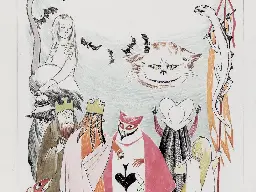
How Moomin creator Tove Jansson found her dark side illustrating Tolkien and Carroll
She thought Lewis Carroll was ‘pathological’. Her Gollum was so monstrous that JRR Tolkien amended his book’s text – but copies of Tove Jansson’s illustrated edition of ‘The Hobbit’ fly off shelves even though they remain in the original Finnish. Susie Mesure visits a new exhibition that shows how the brain behind the Moomins turned her vividly macabre eye to transform other classic books
In November 1960, Astrid Lindgren got in touch with Tove Jansson, the creator of the Moomins. Lindgren, who wrote the Swedish children’s classic Pippi Longstocking, was also a publisher – and she begged Jansson to turn her imagination to the works of JRR Tolkien. “Who will comfort Astrid if you don’t agree to the proposal I’m now going to make to you?” Lindgren wrote in a letter, riffing on the title of another of Jansson’s recent picture books, Who Will Comfort Toffle?
In the UK, as in her native Finland, Tove Jansson is, of course, best known for the Moomins, an adventurous family of fantastical creatures who live in a magical valley on the edge of a Finnish archipelago. A Moomin comic strip ran in London’s Evening News from 1954 until 1975, reaching millions of readers across the Commonwealth, and, more recently, the first new animation series about the Moomins for nearly three decades – Moominvalley – brought the white trolls to life for a new, younger generation. Fans range from devotees who grew up on books such as Finn Family Moomintroll or Comet in Moominland, to those with a penchant for collecting Moomin mugs, which Moomin Characters, the family-owned company that looks after Jansson’s legacy, still churns out year after year.
Less is known, however, about the success Jansson, a Finnish icon who died in 2001 aged 86, had illustrating the work of other writers, something a new exhibition in Paris is putting under the spotlight. Houses of Tove explores how Jansson was so much more than a comic strip creator, a job she came to loathe because it kept her from her true passions: painting and writing. The show includes a first edition of The Hobbit, or Bilbo – en hobbits äventyr, as it is known in Swedish, which Jansson jumped at the chance to illustrate for Lindgren. It also features a number of preparatory sketches she made for the commission, which were used in a 1973 Finnish translation: the first edition, featuring a wonderful red dragon hovering above a tiny army scaling jagged peaks, is on display.
Images
- Eye of Sauron public art in Toronto
Made using discarded parking tickets, among other things. More images here: https://archive.org/details/lawful-evil-hwmb-03-009
- History of Middle-earth boxed setswww.tolkienguide.com History of Middle-earth boxed sets
Ill need shelf space soon... a lot of shelf space XD
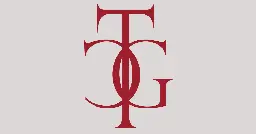
Just saw these new HoMe boxed sets are coming out, with the first set releasing in November
- Read a rare, unedited translation of Jonah by J.R.R. Tolkienweb.archive.org Read a rare, unedited translation of Jonah by J.R.R. Tolkien
Did you know that the same author who wrote about hobbits, elves and orcs also translated the Book of Jonah for the Jerusalem Bible? J.R.R. Tolkien, best known for The Lord of the Rings and The Hob…
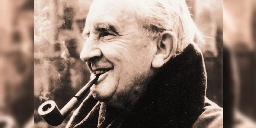
edited for tone and in regard to topic at hand.
The author who wrote about hobbits, elves and orcs also translated the Book of Jonah for the Jerusalem Bible. J.R.R. Tolkien, best known for The Lord of the Rings and The Hobbit, was asked in 1957 to contribute to a new translation of the Bible coming out of England.
The task was led by Fr. Alexander Jones, an English priest who started a project to translate the Bible based on the original Hebrew and Greek texts. This was in response to Pope Pius XII’s encyclical Divino Afflante Spiritu that encouraged scripture scholars to translate anew the Bible based on the original languages, instead of the Latin Vulgate.
Fr. Jones was inspired by a new French translation and, when in doubt, the translators of the English edition consulted the French. The project was innovative and the goal was to create a modern literary translation.
Tolkien was a well-known philologist and author at the time and Jones decided to contact him in hopes that he could contribute. Tolkien accepted the task and was given the Book of Jonah. After his initial draft Jones wrote back, saying, “In truth I should be content to send you all that remains of the Bible, with great confidence, but there is a limit to generosity and opportunity!”
Unfortunately, what now appears in the Jerusalem Bible has been highly edited after Tolkien submitted his final draft. This was for various reasons, but now for the first time it is possible to read Tolkien’s original translation.
While there was a recent attempt to publish this material in book form, the only place to find it is in The Journal of Inklings Studies. It is available online, through a digital subscription, and allows Tolkien enthusiasts to see how Tolkien translated the book of the Old Testament. What ended up in the Jerusalem Bible can also be viewed here.
When comparing the two there do exist several lines that were left unedited in the final edition. For example, Tolkien translated Jonah 2:1 as, “And Yahweh appointed a great fish to swallow Jonah; and Jonah remained in the belly of the fish three days and three nights.”
This was phrasing was important to Tolkien as he wrote in a letter, “Incidentally, if you look at Jonah you’ll find that the ‘whale’ – it is not really said to be a whale, but a big fish – is quite unimportant. The real point is that God is much more merciful than ‘prophets,’ is easily moved by penitence, and won’t be dictated to even by high ecclesiastics whom he has himself appointed.”
The most “Tolkien-esque” line in the whole book is Jonah 2:6-7, which reads in both his draft and the final translation as, “The seaweed was wrapped about my head at the roots of the mountains.”
This last phrase might sound familiar and is found in The Lord of the Rings, when Gollum sees the Misty Mountains for the first time, “It would be cool and shady under those mountains. The Sun could not watch me there. The roots of those mountains must be roots indeed; there must be great secrets buried there which have not been discovered since the beginning.”
Note
Tolkien was a devout Catholic and while we don't have an entire Bible translated, this is fascinating nevertheless.
- Is Mordor Based on the Himalayas?www.atlasobscura.com Is Mordor Based on the Himalayas?
Much of Asia seems to be riddled onto the Lord of the Rings map of Middle Earth.

extract
Where on earth was Middle-earth? Based on a few hints by Tolkien himself, we’ve always sort-of assumed that his stories of “The Hobbit” and “The Lord of the Rings” were centered on Europe, but so long ago that the shape of the coasts and the land has changed.
But perhaps that’s too easy and too Eurocentric an assumption; perhaps, like so many other things these days, Tolkien’s fantasy realm too is in dire need of mental decolonisation.
And here’s an excellent occasion: an Iranian Tolkienologist has found intriguing hints that the writer based some of Middle-earth’s topography on mountains, rivers, and islands located in and near present-day Pakistan.
... (read all on the site)
In an article published on Arda.ir, the web page for the Persian Tolkien Society, Mohammad Reza Kamali writes that during several years of cartographic study, “I found that maybe there are real lands [that] could have inspired Professor Tolkien, and some of them are not in Europe.”
Around 2012, Kamali’s eye stopped when it came across a Google Map of Central Asia that showed the mountain chain of the Himalayas, the peaks of the Pamirs bunched together in an almost circular area, and the huge, flat oval of the Takla Makan desert, bounded to the north by the Tian-Shan mountains.
...
But are these similarities really more than coincidences? Why would Tolkien, who was based in Oxford and steeped in English lore and Germanic mythology, turn to the Indian subcontinent for topographical inspiration? Perhaps because cartographic knowledge of that part of the world was far more general in Britain then than it is now. Until the late 1940s, the countries we know today as India and Pakistan were part of the British Empire. Detailed maps of the region would have been standard fare for British atlases.
Kamali is convinced that the topographical features on Tolkien’s map of Middle-earth are not mere fantasy, but derive from actual places in our world, and were ‘riddled’ onto the map. In that case, we may look forward to more discoveries of Tolkien’s real-world inspiration.
Here’s one example of Tolkienography—if that’s what we can call the effect of actual geography on this particular writer’s imagination—which I gleaned myself, some years ago in East Yorkshire. A local historian told me that Tolkien had been stationed in the area during the First World War, and had apparently stored away some local place names for later use. The name Frodo, he said, derived from a town where he had attended a few dances – Frodingham, a village across the Humber in northern Lincolnshire, not far from Scunthorpe (Scunto? We dodged a bullet there).
Whether that story is entirely true or not is beside the point. As fantasy fans know, any grail quest is ultimately about the quest, not the grail. In fact, to quote Mr Kamali, the treasure is important only because it’s well hidden, “by a clever professor who enjoys riddles.”
- J.R.R. Tolkien’s little-known feud with carsweb.archive.org J.R.R. Tolkien’s little-known feud with cars
Tolkien couldn't stand cars, and his philosophy of embracing walking and biking might just be the key to a hobbit's happy and cheerful life.
Tolkien couldn't stand cars, and his philosophy of embracing walking and biking might just be the key to a hobbit's happy and cheerful life.
Most of us who love the Lord of the Ringsbooks have felt the appeal of a hobbit’s life. These merry little folk live generally uncomplicated and joyful lives full of good cheer, song, good food and jolly (if sometimes nosey) community.
One of the most self-evident ways to live like a hobbit is also pretty counter cultural. It’s to ditch your car in favor of walking or biking to your destination instead.
Hobbits, and most of the good creatures in Lord of the Rings, consistently opt for a simpler and slower pace of life. Industrialization and polluting machinery in the series are consistently symbols of evil, embodied by Sauron and his orcs.
The series’ none-too-subtle rejection of industrialization reflects author J.R.R. Tolkien’s own personal views. After owning a car for a time when his four children were little (an experience that provided the inspiration for his little-known storybook Mr. Bliss), Tolkien sold the car and switched to a bicycle as a matter of principle.
A cautionary message from his writings is that “we must recognize the machine for what it is — a mere tool with the potential to enslave, against which we must be ever on guard.”
Tolkien’s loathing of motor-cars
It’s a little-known fact that Tolkien abhorred cars to an intense degree. As Tom Neas points out in a Geek Insider piece:
> Tolkien did own a car for a short period of time. He purchased a Morris Cowley in 1932, which he named “Jo.” A few years later he replaced Jo with a new car, creatively named “Jo 2.” > > Tolkien was not a good driver; on an early visit to his sister he knocked down part of a stone wall. However, he was brazen, speeding down Oxford streets with little concern for other drivers or pedestrians, crying “Charge ’em and they scatter!” > > By the start of the second World War, Tolkien gave up driving, as rationing had begun. Around the same time, he noticed the damage that cars did to the landscape and never drove again, which gave rise to his more well-known negative views on cars.
Cars destroyed peace and beauty, he felt, and made life less pleasant all around. He referred to a car’s motor as the “infernal combustion engine,” as in a letter to his son in 1944,
> It is full Maytime by the trees and grass now. But the heavens are full of roar and riot. You cannot even hold a shouting conversation in the garden now, save about 1 a.m. and 7 p.m. – unless the day is too foul to be out. How I wish the “infernal combustion” engine had never been invented. Or (more difficult still since humanity and engineers in special are both nitwitted and malicious as a rule) that it could have been put to rational uses—if any.
Cars symbolize “spirit of Isengard”
I don’t think it’s a coincidence that he named the villain in The Hobbit Smaug, like the smog of factories and machines.
He referred to “destroying Oxford in order to accommodate motor-cars” as an example of “the spirit of ‘Isengard,’ if not of Mordor.”
Harsh words, but does Tolkien perhaps have a point? Besides the congestion, traffic, and commotion cars cause, they can distance us from our neighbors, removing opportunities for casual daily interactions that bring so much happiness.
Loads of research support the mental and physical health benefits of walking and biking (check out the Netflix documentary Live to 100: Secrets of the Blue Zones for more!).
If you’ve ever wanted to live like a hobbit, maybe you can find an opportunity to ditch the car for an outing this week. Any chance that destination is close enough to walk or bike instead? And who knows, perhaps this outing will lead you to a memorable adventure you never would have found otherwise.
- JRR Tolkien interview: ‘It would be easier to film The Odyssey than The Lord of the Rings’
JRR Tolkien interview: ‘I never expected a money success’
JRR Tolkien interview: ‘It would be easier to film The Odyssey than The Lord of the Rings’
*** After the publication of his Middle Earth epic, the writer spoke to the Telegraph. 50 years after his death, here is the archive interview
This interview was originally published in The Telegraph magazine on March 22, 1968
“Spiders,” observed Professor JRR Tolkien, cradling the word with the same affection that he cradled the pipe in his hand, “are the particular terror of northern imaginations.” The Professor, now 76, is the author of The Hobbit and of the three-volume epic fairy-tale, The Lord of the Rings, the slowest-developing bestseller in modern publishing history. He was on the subject of dragons and the other horrenda which are his scholarly stock-in-trade.
Discussing one of his own monsters, a man-devouring, spider-like female, he said, “The female monster is certainly no deadlier than the male, but she is different. She is a sucking, strangling, trapping creature.”
To Professor Tolkien, a retired Oxford philologist and a man used to dealing evidentially with his material, everything, even in fantasy, must be specific. In his world of wondrous things, he moves with the surety of a white hunter on a game reservation. His dwarfs have detailed family trees. His elves have their own carefully-constructed languages. His wizards work according to union rules. And his hobbits, the most famous of all his characters are a distinctly unfanciful race – food-loving, gift-giving, house-proud, paunchy – and as believable as your local newsagent.
When John Ronald Reuel Tolkien leads you into the cramped garage that serves as library, he leads you at once into the magic and legend of Middle-earth, the three-dimensional cosmogony of The Lord of the Rings. Not that the garage itself is any cave of wonders. Jammed between the Professor’s own house and the one next door, in an undistinguished Oxford suburb, it would be no more than a banal little room, filled with files and a clutter of garden chairs, if it were not for the man.
Tolkien, who describes himself as “tubby”, has grey eyes, firm tanned skin, silvery hair and quick decisive speech. He might have been, 50 years ago, the model of the kindly country squire. Any hobbit would trust this man, any dragon would quail before him, any elf name him friend. Effortlessly, he compels you to admire him as much as – and herein lies his charm – he clearly admires himself.
To the small but bitter anti-Ring coterie – some of whom profess to see sinister meanings in the text – his very ebullience would presumably constitute an irritant. But to devotees, all this adds up to the perfect cult-hero.
Tolkien cultists, though predominantly academic and egghead, are not wholly so. Housewives write to him from Winnipeg, rocket-men from Woomera, pop-singers from Las Vegas. Ad men discuss him in London pubs. Germans, Spaniards, Portuguese, Poles, Japanese, Israelis, Swedes, Dutch and Danes read him in their own languages.
He is also a literary opiate for hippies, who carry his works to their farthest-flung pads, from San Francisco to Istanbul and Nepal.
Despite the fact that his books lack perversion, four-letter words, homosexuality and sadism – virtually everything that makes 20th-century fiction so commercially desirable – the Professor and those connected with his publications have found the streets of Middle-earth paved with gold.
“I never expected a money success,” said Tolkien, pacing the room, as he does constantly when he speaks. “In fact, I never even thought of commercial publication when I wrote The Hobbit back in the Thirties.
“It all began when I was reading exam papers to earn a bit of extra money. That was agony. One of the tragedies of the underpaid professor is that he has to do menial jobs. He is expected to maintain a certain position and to send his children to good schools. Well, one day I came to a blank page in an exam book and I scribbled on it. ‘In a hole in the ground there lived a hobbit.
“I knew no more about the creatures than that, and it was years before his story grew. I don’t know where the word came from. You can’t catch your mind out. It might have been associated with Sinclair Lewis’s Babbitt. Certainly not rabbit, as some people think. Babbitt has the same bourgeois smugness that hobbits do. His world is the same limited place.”
'In a hole in the ground, there lived a hobbit': the inspiration for Middle Earth came while Tolkien was marking exam papers 'In a hole in the ground, there lived a hobbit': the inspiration for Middle Earth came while Tolkien was marking exam papers Credit: Pamela Chandler
When Professor Tolkien spoke of the hobbits’ limited world, he was referring only to their native heath, the Shire, where they built their snug homes in the ground, fitted them with round doors and windows, and placidly surveyed their possessions and studied their family trees. But the rest of Middle-earth, in which Bilbo Baggins of the Shire unexpectedly finds himself adventuring, is a boundless horizon filled with marshes and mountains, terror and beauty.
Tolkien let a few of his Oxford friends read The Hobbit. One, a tutor, lent it to a student, Susan Dagnell. When, some time later, Miss Dagnell joined Allen & Unwin, the publishers, she suggested it as a children’s book. Sir Stanley Unwin assigned his son, Rayner, then ten, to read it. (“I gave him a shilling,” Sir Stanley recalls.)
Although The Hobbit was no runaway bestseller, readers were fascinated by Middle-earth, and Allen & Unwin asked for a sequel. Tolkien then offered The Silmarillion, a saga of the mist-shrouded beginnings of elves and men, which he had begun in 1916. But it was turned down in Museum Street as being too dark and Celtic. “They were quite right,” Tolkien recalls. He is now revising it.
Even before The Hobbit, he had been gestating The Lord of the Rings, which historically, in Middle-earth terms, actually follows it. Now, with The Silmarillion rejected, he returned to the Ring, which relates the deeds of Bilbo’s nephew Frodo, and of a mighty wizard called Gandalf. Over the next 14 years the bulky manuscript slowly took shape.
Sir Stanley Unwin, whose competitors called him mad when he published the first two volumes in 1954, told us, “I was in Japan when the manuscript arrived. Rayner wrote to say it seemed a big risk. It would have to be published in three volumes, at a guinea each – this at a time when 18 shillings was top for a bestseller. But Rayner added, ‘Of course, it’s a work of genius’. So I cabled him to take it.
“Of all the books I’ve brought out in 63 years, there are few that I can say with absolute confidence will sell long after my departure. Of this one I had no doubts.”
Tolkien’s imaginary landscapes grew out of his predilection for creating languages. “Anyone who invents a language,” he said, “finds that it requires a suitable habitation and a history in which it can develop. A real language is never invented, of course. It is a natural thing. It is wrong to call the language you grow up speaking your native language. It is not. It is your first learnt language. It is a by-product of the total make-up of the animal.”
Tolkien’s Middle-earth, with people, histories, languages all logically integrated, corresponds spiritually to north-eastern Europe. But it extends southward to include lands where dark-skinned people ride to battle on beasts called oliphaunts, and east to evil Mordor which “would be roughly in the Balkans”.
Tolkien’s friend and fellow author, the late C. S. Lewis, “was immensely immersed” in the development of the Ring, but not always mutely admiring. “He used to insist on my reading, passages aloud as I finished them, and then he made suggestions. He was furious when I didn’t accept them. Once he said, ‘It’s no use trying to influence you, you’re uninfluenceable!’ But that wasn’t quite true. Whenever he said ‘You can do better than that. Better Tolkien, please!’ I used to try.”
Professor Tolkien sold his original 4,200-page typescript of the Ring to Marquette University in Milwaukee, Wisconsin: “I wanted the money very badly to buy this house.”
He was born at Bloemfontein in South Africa. “I was three when I was brought to England,” he said. “After the dry, barren places I had known, I had in a way been ‘trained’ to savour the delicate English flowers and the grass. I had this strange sense of coming home when I arrived. The hobbit business began partly as a Sehnsucht for that happy childhood which ended when I was orphaned, at 12.”
The scene of his déjà vu – Sarehole, on the outskirts of Birmingham – became the model for the Shire.
He recalled, “As a child, I was always inventing languages. But that was naughty. Poor boys must concentrate on getting scholarships. When I was supposed to be studying Latin and Greek, I studied Welsh and English. When I was supposed to be concentrating on English, I took up Finnish. I have always been incapable of doing the job in hand.”
He was a scholarship student at King Edward VI School in Birmingham, then went on to Oxford. With the Lancashire Fusiliers on the Somme, he saw tattered and burnt-out landscapes which find unearthly echoes in the Ring. The years that followed – in Leeds University and later at Oxford – were marked by academic honours. But parallel to scholarship has always run his strong preoccupation with the mystic land of Faerie.
This, to him, is a rich and wondrous realm filled with beauty, peril, joy and sadness – to be relished for its own sake, and not dissected.
So, naturally, he resists the earnest student who tries to read “meanings” into the Ring. “The book,” he said, “is not about anything but itself. It has no allegorical intentions, topical, moral, religious or political. It is not about modern wars or H-bombs, and my villain is not Hitler.”
Must fairytales be confined to legendary times and places, or could they be staged in modern settings? “They cannot,” he said, “not if you mean in a modern technological idiom. The reader must approach Faerie with a willing suspension of disbelief. If a thing can be technologically controlled, it ceases to be magical.”
Tolkien regrets that, over the centuries, fairytales have been downgraded until they are considered fit only for very young children. Most of all, he dislikes the story that moralises: “As a child I couldn’t stand Hans Andersen, and I can’t now.”
He has written: “The age of childhood-sentiment has produced a dreadful undergrowth of stories adapted to what is conceived to be the measure of children’s minds and needs. The old stories are bowdlerised. The imitations are often merely silly or patronising or covertly sniggering with an eye on the other grown-ups present. ...”
He said to us: “Believable fairy-stories must be intensely practical. You must have a map, no matter how rough. Otherwise you wander all over the place. In The Lord of the Rings I never made anyone go farther than he could on a given day.”
So real to its creator is Middle-earth that he has included a 127-page appendix which is his characters’ “actual” historical, sociological and philological underpinning. For Tolkien to have created a hobbit without a calendar and a family tree would be to leave him without flesh.
For the same reason, he must accompany his languages with notes on vowel-sounds and stresses, scripts, alphabets and derivations. ‘“I have constructed them,” Tolkien explained, “by scientific methods. They must be at least as complete and as organised as the history of the Elves.”
It is the appendix, Tolkien thinks, which has helped trigger the enormous new enthusiasm for the Ring among students in the United States: “A lot of it is just straight teenage stuff. I didn’t mean it to be, but it’s perfect for them. I think they’re attracted by things that give verisimilitude.”
Professor Tolkien has, in effect, provided an intellectual Meccano-set for civilisation creators. Students search for word derivations in the invented tongues. They create new and improved Middle-earth. They build hobbit houses. They try to fill in the early unrecorded portions of Middle-earth’s history.
What he calls, rather affectionately, the ‘absurd frenzy” began in America in 1965 with an unauthorised paperback of the Ring by Ace Books. Previous hardback editions of The Hobbit and the Ring had sold unspectacularly to limited circles whose most vocal devotee was W. H. Auden. The Ace edition was cheap, and suddenly campus booksellers couldn’t cope.
'Go, go Gandalf': Ian McKellen in The Hobbit: An Unexpected Journey 'Go, go Gandalf': Ian McKellen in The Hobbit: An Unexpected Journey Credit: Warner Bros
The unauthorised, i.e. non-royalty-paying, publication became a cause célèbre. In the autumn of 1965, Ballantine Books brought out an approved paperback. Hobbitomanes promptly made it a point of honour to buy the sanctified version, even if they already owned the exorcised one. The true aristocracy own the original English edition. “It smells right,” one fan said.
Tolkien addicts wear lapel-buttons that say “Frodo Lives” or “Go go Gandalf ’ in English or Elvish letters, belong to Tolkien societies and write love poems in Elvish.
Tolkien receives innumerable offers for film rights, musical-comedy rights, TV rights, puppetry rights. A jigsaw-puzzle company has asked permission to produce a Ring puzzle, a soap-maker to soap-sculpt Ring characters. Tolkien worshippers are outraged by these crass approaches. “Please,” wrote a 17-year-old girl, “don’t let them make a movie out of your Ring. It would be like putting Disneyland into the Grand Canyon.”
The song cycle, the only commercial venture so far, began when Donald Swann, half of the At the Drop of a Hat team, set to music six of the poems which punctuate the Ring. One is in Elvish.
When we asked Tolkien how Elvish should be sung, he replied, “Like Gregorian chants.” Then, in a wavering churchly counter-tenor, he intoned the first lines of the farewell song of Galadriel, the Elf Queen:
> Ai! laurië lantar lassi súrinen, > > Yéni únótime ve radar aldaron! > He feels strongly that the Ring should not be filmed: “You can’t cramp narrative into dramatic form. It would be easier to film The Odyssey. Much less happens in it. Only a few storms.”
He dislikes being bracketed with epic-writers of the past. C. S. Lewis once declared that Ariosto could not rival Tolkien. To us Tolkien said, “I don’t know Ariosto and I’d loathe him if I did.” He has also been likened to Malory, Spencer, Cervantes, Dante. He rejects them all. “Cervantes?” he exploded. “He was a weedkiller to romance.” As for Dante: “He doesn’t attract me. He’s full of spite and malice. I don’t care for his petty relations with petty people in petty cities.
“In any case, I don’t read much now, not even fairy-stories. And then I’m always looking for something I can’t find.” We asked what that was. He replied, “Something like what I wrote myself.”
Some people have criticised the Ring as lacking religion. Tolkien denies this: “Of course God is in The Lord of the Rings. The period was pre-Christian, but it was a monotheistic world.”
Monotheistic? Then who was the One God of Middle-earth?
Tolkien was taken aback: “The one, of course! The book is about the world that God created – the actual world of this planet.”
When we asked the Professor if he would sign our copy of the Ring, he said, “Would you like an inscription? What kind?” We suggested something in Elvish. Carefully he wrote a line in the beautiful flowing script he has invented: “It’s the High Elvish greeting, ‘Elen síla lúmenn’ omentielvo’. It means, ‘A star shines on the hour of our meeting.’”
- Philologists, pedants and obsessives: how crowd-sourcing created the Oxford English Dictionarytheconversation.com Philologists, pedants and obsessives: how crowd-sourcing created the Oxford English Dictionary
An irresistible history of the OED reveals that English is a global language in its sources, its reach and its ownership.
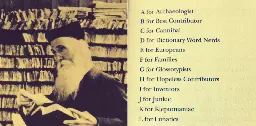
Stuart Kells
The Dictionary People: The Unsung Heroes who Created the Oxford English Dictionary is a celebration of words and word-people: authors, editors, publishers, linguists, lexicographers, philologists, obsessives, pedants. Its author, Sarah Ogilvie, was formerly an Oxford English Dictionary editor and wrote the 2013 book Words of the World: A Global History of the Oxford English Dictionary.
Review: The Dictionary People: The Unsung Heroes who Created the Oxford English Dictionary (Chatto & Windus)
Ogilvie’s focus in The Dictionary People is on editor James Augustus Henry Murray (1837-1915), who orchestrated a collective, pre-digital mode of crowd-sourcing to produce the first edition of the dictionary.
Like Murray’s OED, The Dictionary People is a collective exercise. In addition to other supporters and sources, Ogilvie has assembled the book with the assistance of ten student researchers at Stanford University, with an eye for fascinating allusions and anecdotes.
We learn from The Dictionary People that Jane Austen was the first to write the word “outsider” and that a cousin of Eleanor Marx hallucinated that she had written Louisa May Alcott’s Little Women.
We also learn that the OED entry for ruffle – “to rumple, to destroy the smoothness or evenness of something” – took an illustrative quotation from Eleanor’s 1886 translation of Madame Bovary, and that, at the age of 27, a not-yet-famous J.R.R. Tolkien worked on the OED as an editorial assistant with the lexicographer Charles Onions, whose family referred to Tolkien as “Jirt”, short for J.R.R.T.
Yet another delightful detail: 18 words from the science-fiction novella Flatland: A Romance of Many Dimensions (1884), including “dimensionable” and “nondimensionable”, made it in to the dictionary. Written by mathematician and theologian Edwin Abbott Abbott under the pseudonym “A. Square”, Flatland is the story of a square who visits Pointland, Lineland and Spaceland “to explore the possibility of other dimensions”.
A book with Austen, Woolf, Tolkien and sci-fi? The Dictionary People is irresistible.
*** Many books have been written on the search for the Northwest Passage and John Franklin. There are numerous biographies of Leslie Stephen, J.R.R. Tolkien and the Marxes. OED contributor Edward Sugden was profiled in a book by his daughter, as well as in the Australian Dictionary of Biography and the centenary history of Melbourne University Publishing. Henry Spencer Ashbee is the subject of Ian Gibson’s book The Erotomaniac (2001). Ogilvie’s previous book covers some of the same ground as The Dictionary People (it contains the Jirt anecdote, for example) and she wrote about Chris Collier for the Australian Book Review in June 2012.
***
Ogilvie’s bigger picture reveals that the English language is not owned by a club or a committee or a university or by people from a particular social class or place. It is a global language in its sources, its reach and its ownership. The language, and the literary and scholarly traditions that were built with it, belong to all of us.
***
Read the entire fascinating article on the link above.
- How Tolkien filled Middle-Earth with a “weird realism” philosophybigthink.com How Tolkien filled Middle-Earth with a “weird realism” philosophy
The One Ring has its own agency and sentience — and it opens up a wonderful philosophy of things beyond our comprehension.
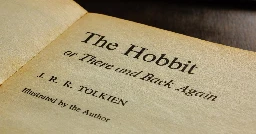
There is a lot of stuff in Middle-Earth — exquisite gems, magic rings, fabled swords, and ancestral talismans — as well as the more general matter of clothes and armor, megaliths and monuments, food and drink. A supernatural aura suffuses many of these things: stones (standing stones, Seeing Stones, ruins), trees (waking, walking, warring), and paths (traces and memories of ancient footsteps, sentient and animate, seeming to plot). Some things are more mundane (rations, gear), others immense, international enterprises — such as the outbreak of total war and the mass mobilization of armed forces across Middle-Earth, activating communities in different ways.
In the context of all this stuff and all these happenings, many of the peoples of Middle-Earth are materialistic and often covetous in the extreme — the Elves fight for centuries over the Silmarils (coveted jewels); Dwarves are proverbially avaricious and bring ruin on themselves through mining too greedily or contracting dragon sickness in the face of opulent golden hoards; and even Hobbits can be jealous and acquisitive, apt to pilfer from family (the Sackville-Bagginses) and friends (Bilbo and the Arkenstone). This attention to solid objects, goods and chattels, treasure and riches gives Middle-Earth a palpable grain of reality, as well as imaginative affluence. Peter Jackson’s Rings productions are physically tangible too, with real props to give them the heft of reality, and there was an immediate market for replica artifacts from Wētā Workshop.
Much of this stuff is simply weird. The bedrock of Tolkien’s Middle-Earth writing consists of a very English eeriness — what today is often described as “folk horror.” There are haunted ruins, stone circles, the undead; strange truths hidden in riddles and nursery rhymes; superstitions, herblore, and witchcraft; ancient inscriptions, cryptic manuscripts, and secret writings; amoral nature spirits and sentient landscapes; occult rites, drugs, and altered states; cryptobotany and cryptozoology; deluged territories that cry out for recognition; temporal distortions; and, nearly everywhere, the “Uncanny.”
These elements are often radically developed, especially in cinematic adaptations, which can draw on a rich inheritance of earlier stage, film, and television to incorporate elements from Hamlet to Doctor Who. Tolkien’s works and their legacy are, then, both familiar and unfamiliar — and this is also one of their key themes: the search for home. Indeed, the very chapter titles of The Hobbit contrast the homely (“A Short Rest,” “A Warm Welcome,” “On the Doorstep”) with the unhomely (“An Unexpected Party,” “Queer Lodgings,” “Not at Home”), often ironically and in puns. Bilbo, Frodo, and Sam often think of home; Aragorn has yet to find his; and Thorin’s Company have lost theirs.
Recent philosophy, in part inspired by Tolkien’s literary contemporary H.P. Lovecraft, has focused on such “weird realism” and how thinking in particular about objects can challenge or displace Human assumptions of the world by focusing on the perspective of things — such as a ring — and it is striking how Tolkien’s work exemplifies such approaches. As the philosopher Graham Harman argues, “It remains unclear just what objects are, but it is already clear that they far exceed the human-centered.” So can reality be perceived from the perspective of objects rather than the perspective of Humans; can objects be at the center of things? What are objects, and what can they teach us about species? Harman claims that “‘Object’ can refer to trees, atoms, and songs, and also to armies, banks, sports franchises, and fictional characters.”
Can reality be perceived from the perspective of objects rather than the perspective of Humans? Can objects be at the center of things?
The world therefore teems with stuff — loads of stuff everywhere, all the time — which persistently exposes the limitations of Human comprehension and perspectives. This school of thought, known as “Object-Oriented Ontology” or “Speculative Realism,” whispers of a world that is delineated and governed by things that we, as Humans, cannot understand — or even define — any more than we can know what it is like to be a bat: what is it like, now, to be a hammer, or the University of Oxford English Faculty? For the radical philosopher Eugene Thacker, these “blind spots” are an abiding concern because, for him, the world remains “superlatively beyond human comprehension.” Yet for Tolkien, buoyed by his Tridentine Catholic convictions and a sublime faith in eucatastrophe (blissful and unforeseen consummation), this sense of being beyond comprehension is not a cause of “cosmic pessimism” and a demonstration of the futility of thought, but the source of wonder.
The One Ring clearly has agency and its own, alien sentience; it can also grow and shrink. Harman describes plutonium as a “strange artificial material” that possesses ‘an additional reality . . . that is in no way exhausted by the unions and associations in which it currently happens to be entangled,” a reality that is “yet to be determined.” The Ring too has additional realities “yet to be determined”: when it is heated it remains cold but reveals a verse in a strange language; when it is worn it confers invisibility, enabling a character to be both there and not there; it emanates an aura of madness that is irresistible to some yet disregarded by others.
Moreover, what becomes the key episode of The Hobbit — the finding of the Ring — is told and retold in The Lord of the Rings (being written and, importantly, rewritten by Tolkien) because that scene too contains “additional realities” and latent significance. Similarly, the palantίr (crystal ball) possesses a similarly almost radioactive power that tempts Pippin into stealing it from Gandalf, leads to the confusion not only of Denethor but also of Sauron, and which can be weaponized by Aragorn in confronting Sauron. The definition of objects — things — can, furthermore, be extended to include concepts, experiences, and activities, such as hospitality, sleep, songs, the dark, species, and, indeed, words: words are more stuff.
- 6 Historic Places That Inspired Tolkien’s Lord of the Ringsheritagecalling.com 6 Historic Places That Inspired Tolkien’s Lord of the Rings
Catch a glimpse of Middle-Earth at these listed historical sites in England.
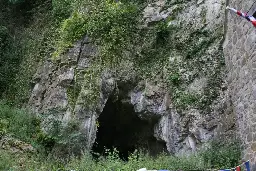
cross-posted from: https://feddit.uk/post/2032196
> > In both ‘The Lord of the Rings’ and ‘The Hobbit’, J.R.R. Tolkien crafted a magical realm, captivating the hearts and minds of countless individuals with the dream of exploring the enchanting land. > > > > From dramatic caves, looming towers, and ancient monuments, here are the historical sites in England where you can experience a glimpse of Middle-Earth.
- How J.R.R. Tolkien's novels were inspired by Medieval poems of 'northern bravery'theconversation.com How J.R.R. Tolkien's novels were inspired by Medieval poems of 'northern bravery'
For the 50th anniversary of Tolkien’s death, I want to celebrate some of his major contributions to the study of medieval literature.
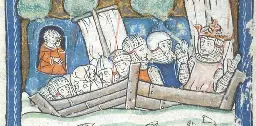
In a moment of distraction from the laborious work of marking an “enormous pile of examination papers”, J.R.R. Tolkien flipped to a blank page on a student essay and scribbled, “in a hole in the ground there lived a hobbit”.
This became the first line of The Hobbit (1937). From this doodle Tolkien went on to write one of the world’s most popular fantasy adventure series, The Lord of the Rings (1954).
His main work, however, was not as the writer of fantasies that made him so famous. For the 50th anniversary of Tolkien’s death, I want to celebrate Tolkien’s life as a medievalist and philologist (historian of languages), as well as some of his major contributions to the study of medieval literature.
Tolkein’s first teaching post was at the University of Leeds, where he worked on a translation of the 14th-century Middle English poem, Sir Gawain and the Green Knight. For many, his is still one of the best translations.
Email Twitter Facebook3 LinkedIn Print
In a moment of distraction from the laborious work of marking an “enormous pile of examination papers”, J.R.R. Tolkien flipped to a blank page on a student essay and scribbled, “in a hole in the ground there lived a hobbit”.
This became the first line of The Hobbit (1937). From this doodle Tolkien went on to write one of the world’s most popular fantasy adventure series, The Lord of the Rings (1954).
His main work, however, was not as the writer of fantasies that made him so famous. For the 50th anniversary of Tolkien’s death, I want to celebrate Tolkien’s life as a medievalist and philologist (historian of languages), as well as some of his major contributions to the study of medieval literature.
Tolkein’s first teaching post was at the University of Leeds, where he worked on a translation of the 14th-century Middle English poem, Sir Gawain and the Green Knight. For many, his is still one of the best translations. Fight back against disinformation. Get your news here, direct from experts A black and white photograph of J.R.R. Tolkien. Photograph of J. R. R. Tolkien in the 1920s upon leaving Leeds University. Bodleian Library
In 1925, Tolkien won a professorship at the University of Oxford. A year later he translated the Old English poem, Beowulf. He remained a professor of English language and literature for the next 20 years.
Tolkien’s world was in a state of flux. The rudderless turmoil of the two world wars undoubtedly had affected his writing and this is possibly why his preference for settings was always for pre-industrial England. This can be seen in his love of fairy tales and in his drawings, which are almost all natural landscapes, with little architecture.
His love of trees was so great that he wrote a letter to his publisher saying: “I am (obviously) much in love with plants and above all trees, and always have been and I find human mistreatment of them as hard to bear as some find ill-treatment of animals.” In another, he talks of his fondness for myth, fairy tales “and above all for heroic legend”.
A mythology for England
Tolkien’s biographer, Humphrey Carpenter, argues that he was attempting to create “a mythology for England” through his fantasy fiction, by creating an imaginary world with its own languages, history, cultures and people.
Tolkien did this by drawing not only on his knowledge of languages and literature in Old and Middle English, but also on those languages that influenced the cultural and historical development of Britain, such as Finnish, Welsh, Old Norse, Old High and Middle German.
He loved languages – both ancient and modern – and was well versed in more than a few, including Finnish, Welsh, Latin, Greek, Hebrew, Danish, Old Norse, Old English and Old Icelandic, as well as his invented Elvish languages Quenya and Sindarin, which have full etymologies.
Tolkien wrote in a letter in 1951 about his desire to “make a body of more or less connected legend, ranging from the large and cosmogonic to the level of romantic fairy-story”. He wanted to dedicate it “simply: to England: to my country”.
The source of inspiration for this “mythology for England” was the medieval world Tolkien knew so well from his scholarly studies.
‘Northern courage’
One theme that Tolkien picked up from his work in medieval literature – and which runs like a thread throughout his fictional worlds – is the reckless bravery and heroic courage that many medieval protagonists exhibit.
Tolkien termed this kind of response to challenge “northern courage” in his 1936 essay, Beowulf: The Monsters and the Critics. It was “northern” because this type of courage is highly prevalent in the Old Norse sagas that Tolkien was so familiar with and which grew out of the northern Scandinavian countries between the 9th and 13th centuries. This concept is probably best expressed in a line from the Old English poem, The Battle of Maldon (AD991): “Will shall be the sterner, heart the bolder, spirit the greater as our strength lessens.”
Simply put, northern courage is when one exhibits the courage to keep persevering despite the knowledge that sooner or later defeat is inevitable. In constructing his “mythology for England”, Tolkien drew on medieval poems such as Beowulf and The Battle of Maldon as he argued that the people of ancient England would have had a “fundamentally similar heroic temper”.
Email Twitter Facebook3 LinkedIn Print
In a moment of distraction from the laborious work of marking an “enormous pile of examination papers”, J.R.R. Tolkien flipped to a blank page on a student essay and scribbled, “in a hole in the ground there lived a hobbit”.
This became the first line of The Hobbit (1937). From this doodle Tolkien went on to write one of the world’s most popular fantasy adventure series, The Lord of the Rings (1954).
His main work, however, was not as the writer of fantasies that made him so famous. For the 50th anniversary of Tolkien’s death, I want to celebrate Tolkien’s life as a medievalist and philologist (historian of languages), as well as some of his major contributions to the study of medieval literature.
Tolkein’s first teaching post was at the University of Leeds, where he worked on a translation of the 14th-century Middle English poem, Sir Gawain and the Green Knight. For many, his is still one of the best translations. Fight back against disinformation. Get your news here, direct from experts A black and white photograph of J.R.R. Tolkien. Photograph of J. R. R. Tolkien in the 1920s upon leaving Leeds University. Bodleian Library
In 1925, Tolkien won a professorship at the University of Oxford. A year later he translated the Old English poem, Beowulf. He remained a professor of English language and literature for the next 20 years.
Tolkien’s world was in a state of flux. The rudderless turmoil of the two world wars undoubtedly had affected his writing and this is possibly why his preference for settings was always for pre-industrial England. This can be seen in his love of fairy tales and in his drawings, which are almost all natural landscapes, with little architecture.
His love of trees was so great that he wrote a letter to his publisher saying: “I am (obviously) much in love with plants and above all trees, and always have been and I find human mistreatment of them as hard to bear as some find ill-treatment of animals.” In another, he talks of his fondness for myth, fairy tales “and above all for heroic legend”. A mythology for England
Tolkien’s biographer, Humphrey Carpenter, argues that he was attempting to create “a mythology for England” through his fantasy fiction, by creating an imaginary world with its own languages, history, cultures and people.
Tolkien did this by drawing not only on his knowledge of languages and literature in Old and Middle English, but also on those languages that influenced the cultural and historical development of Britain, such as Finnish, Welsh, Old Norse, Old High and Middle German. Four knights battling in front of a castle. An illustration of knights from a Medieval manuscript. British Library, CC BY-SA
He loved languages – both ancient and modern – and was well versed in more than a few, including Finnish, Welsh, Latin, Greek, Hebrew, Danish, Old Norse, Old English and Old Icelandic, as well as his invented Elvish languages Quenya and Sindarin, which have full etymologies.
Tolkien wrote in a letter in 1951 about his desire to “make a body of more or less connected legend, ranging from the large and cosmogonic to the level of romantic fairy-story”. He wanted to dedicate it “simply: to England: to my country”.
The source of inspiration for this “mythology for England” was the medieval world Tolkien knew so well from his scholarly studies. ‘Northern courage’
One theme that Tolkien picked up from his work in medieval literature – and which runs like a thread throughout his fictional worlds – is the reckless bravery and heroic courage that many medieval protagonists exhibit.
Tolkien termed this kind of response to challenge “northern courage” in his 1936 essay, Beowulf: The Monsters and the Critics. It was “northern” because this type of courage is highly prevalent in the Old Norse sagas that Tolkien was so familiar with and which grew out of the northern Scandinavian countries between the 9th and 13th centuries. This concept is probably best expressed in a line from the Old English poem, The Battle of Maldon (AD991): “Will shall be the sterner, heart the bolder, spirit the greater as our strength lessens.”
Simply put, northern courage is when one exhibits the courage to keep persevering despite the knowledge that sooner or later defeat is inevitable. In constructing his “mythology for England”, Tolkien drew on medieval poems such as Beowulf and The Battle of Maldon as he argued that the people of ancient England would have had a “fundamentally similar heroic temper”.
Northern courage in Lord of the Rings
Northern courage is at work in The Lord of the Rings, when Gandalf confronts the Balrog on the bridge of Khazad-Dûm. In blocking the Balrog – and shouting his famous line, “you shall not pass” – he refuses to allow the enemy to cross the bridge and buys time for the rest of the fellowship to escape. He exhibits magnanimous courage and perseverance in the face of inevitable defeat.
In a different way, the protagonists Bilbo and Frodo Baggins exhibit courage as they leave the comforts of the Shire to fulfil a greater heroic duty. This is probably best summed up in Frodo’s exchange with Gandalf:
> “I wish it need not have happened in my time”, said Frodo. “So do I,” said Gandalf, “and so do all who live to see such times. But that is not for them to decide. All we have to decide is what to do with the time that is given us.”
The wizard’s words here are steeped in northern courage. They insist that we must rise to the challenges offered in our time.
Fifty years on from Tokien’s death, that spirit of northern bravery endures as an alluring concept. What makes Tolkien’s fantastical world so appealing is the recurrent suggestion that the courage manifested to defeat the big monsters in The Hobbit and The Lord of the Rings is the very same courage that can be found in hopeless situations of a more ordinary sort.
Author: Madeleine S. Killacky, PhD Candidate, Medieval Literature, Bangor University
- 'The Lord of the Rings: The War of the Rohirrim' Release Date Is Now Confirmedwww.themarysue.com 'The Lord of the Rings: The War of the Rohirrim' Release Date Is Now Confirmed
'The Lord of the Rings: The War of the Rohirrim' is the first animated adaptation of LOTR since the 1980s. Here is its release date, trailer, cast, and more.

excerpts
> This project is going back to the franchise’s cinematic roots and will be an animated fantasy film. Warner Bros. Animation and New Line Cinema are partnering with Sola Entertainment to bring this animated adaptation to the big screen. It seems the film will have both Lord of the Rings and anime influence inspiring it, as notable anime direct Kenji Kamiyama is set to direct and The Lord of the Rings and The Hobbit films’ co-writer, Philippa Boyen, will serve as executive producer.
> The Lord of the Rings: The War of the Rohirrim will premiere on December 13, 2024. However, it was initially set to premiere on April 12, 2024, with New Line Cinema and Warner Bros. reportedly fast-tracking the film to get it released by early 2024. Due to the ongoing Screen Actors Guild – American Federation of Television and Radio Artists (SAG-AFTRA) strike, though, the film has been delayed for 10 months. The delay was due to Warner Bros. mixing up its entire release schedule due to the ongoing strike.
> Hence, the film will largely focus on the story of Rohan and its ninth King, Hammerhand. Hammerhand was a legendary king, but his reign was rife with chaos as his kingdom faced warfare with the Dunlendings. In particular, the film will explore how Hammerhand defeated Freca, one of the lords of the Dunlendings, who sought the throne of Rothan. However, this incident led Wulf, Freca’s son, to set out in search of vengeance against Hammerhand and the Kingdom of Rohan.
This piece was written during the 2023 WGA and SAG-AFTRA strikes. Without the labor of the writers and actors currently on strike, the work being covered here wouldn’t exist.
- How Tolkien offers consolation in our dark times - The Big Issue | Nick Groom, 26 Aug 2023www.bigissue.com How Tolkien offers consolation in our dark times - The Big Issue
Half a century after JRR Tolkein's death, the Tolkien industry is here to stay. But how much of the author's original meaning is lost on those relying on the movies?
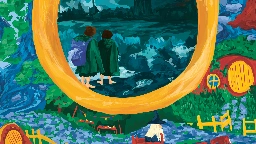
Why do we have such an enduring fascination for all things Tolkien half a century after his death? Author Nick Groom believes it’s because his works remains acutely relevant today
JRR Tolkien died 50 years ago on 2 September 1973, but The Lord of the Rings might have been written last week. You’ve probably read the book or seen the films. Or played the video games, bought the merchandise and seen the memes of Gollum, Galadriel and Gandalf. Ian McKellen is now probably more recognisable as Gandalf than as himself. Middle-earth still has a tenacious hold on our imaginations.
But where does that leave a book about Tolkien? Purists will want to focus on his writing, including the posthumous and immensely challenging The Silmarillion. Eighteen further volumes of Middle-earthiana have appeared since 1980, detailing everything from the earliest version of the Dark Lord Sauron (a cat) to the sex habits of the Elves.
But though the seemingly never-ending series of weighty tomes is testament to Tolkien’s imaginative genius, these books are of limited interest to the general reader who really just wants to know a bit more about Hobbits and a lot more about Gandalf. Sir Peter Jackson’s six extraordinary films (each grossing close to $1 billion) are inevitably eclipsing the originals.
That was the starting point for my own book. After over 40 years reading, studying and teaching Tolkien’s work, it became increasingly apparent that whenever I mentioned The Lord of the Rings nearly everyone was thinking of Elijah Wood, Andy Serkis and McKellen.
We can’t return to a ‘golden age’ in which the books are read before the films are watched. People are encountering Tolkien in all sorts of different and meaningful ways, many of which are remote from the literature. Tolkien is no longer simply an author, but a cultural and industry phenomenon, employing thousands, engaging millions and making billions.
What I discovered was fascinating: Tolkien’s stories have a compelling quality that remains acutely relevant today. Tolkien was writing The Lord of the Rings during the dark days of the Second World War, so he is no patriot for victorious human progress. Instead, he focuses on uncertainty, ambiguity, and above all on failure. His stories end in disappointment, in defeat, and ultimately in death. If good triumphs over evil, it does so only at a terrible cost – such as the disappearance of enchantment from the world.
I was writing my book during our own dark days of pandemic restrictions, and so these themes – of disillusionment and despondency, isolation and loneliness, and helplessness before an implacable and inhuman force – were painfully vivid. Not that Tolkien offers solutions, just the resolution that it is enough to carry on, even in the face of imminent, permanent loss. In other words, I was thinking about the pandemic through Tolkien, and realised that his works can provide a consolation in times when we are victims of circumstances far beyond our control, or even our understanding.
There is an unusual hesitancy and uncertainty in Tolkien’s writing – the author, as well as his characters, frequently seems lost and unsure how to proceed. This is because Tolkien wrote without a plan, preferring to ‘discover’ the plot rather than map it out in advance. So there are dozens of loose ends and false trails, and the experience of reading is shared with the characters themselves, lost in an unfamiliar world and not knowing how to make sense of it. Remarkably, this quality is reflected in Jackson’s movies, as he would typically film the same scene in different ways, meaning that the actors did not know which take would be used in the final edit, or even how their own characters might develop.
In researching the movies, I also realised how far they drew on earlier film and radio adaptations as much as on the books. The much-derided and unfinished Ralph Bakshi production of 1978, for example, in which animation is mixed with live action, was in fact crucial in bringing Jackson’s films to the screen by solving problems of pace and structure, providing details of characters, and even supplying the template for some of the most memorable scenes in the later movies.
The Tolkien industry is here to stay. There will be more seasons of The Rings of Power, more films (including The War of the Rohirrim next year), and doubtless more of Tolkien’s papers to be published. And what makes all of these productions distinctive is their attention to non-human species – whether immortal elves or humble hobbits – in offering new perspectives on the human condition. In doing so they remind us all that we humans are not at the centre of things, but instead just one part of a wide and mysterious world.
***
Twenty-First-Century Tolkien: What Middle-Earth Means To Us Today by Nick Groom is out in paperback on 1 September (Atlantic Books, £12.99). You can buy it from The Big Issue shop on Bookshop.org, which helps to support The Big Issue and independent bookshops.
This article is taken from The Big Issue magazine, which exists to give homeless, long-term unemployed and marginalised people the opportunity to earn an income. To support our work buy a copy!
If you cannot reach your local vendor, you can still click HERE to subscribe to The Big Issue today. Or give a gift subscription to a friend or family member. You can also purchase one-off issues from The Big Issue Shop or The Big Issue app, available now from the App Store or Google Play
!image*
- Actually, the Lord of the Rings extended editions aren’t long enoughwww.thedigitalfix.com Actually, the Lord of the Rings extended editions aren’t long enough
The Lord of the Rings extended editions are infamous for their vast length. The fantasy movies come in at over 11 hours. But, they still aren't long enough.

Lol! I'm inclined to agree.
- The Silmarillion by JRR Tolkien audiobook review – The Lord of the Rings’ mythical forerunnerwww.theguardian.com The Silmarillion by JRR Tolkien audiobook review – The Lord of the Rings’ mythical forerunner
Actor Andy Serkis narrates the posthumously published prelude to Tolkien’s epic masterpiece – a dense yet rich compendium of meticulously crafted lore

> Actor Andy Serkis narrates the posthumously published prelude to Tolkien’s epic masterpiece – a dense yet rich compendium of meticulously crafted lore
> The origin story of The Hobbit and The Lord of the Rings, The Silmarillion is drawn from a collection of manuscripts written over several decades by JRR Tolkien, and published posthumously by his son Christopher Tolkien in 1977 with the help of the fantasy author Guy Gavriel Kay. The foreword, written by Tolkien Jr, explains how outlines of these stories existed “in battered notebooks extending back to 1917 … often hastily pencilled”, and how the task of collating and editing them was “so complex, so pervasive and so many-layered that a final and definitive version seemed unattainable”.
> The stories include the legend of the creation of Eä, the world taking in Valinor, Beleriand, the island of Númenor and Middle-earth, and a history of events leading up to the First Age. In this era, Morgoth, the first Dark Lord, is at war with the High Elves, who are intent on recovering the Silmarils, three gemstones stolen by Morgoth that contain the light that illuminates Middle-earth.
> The actor Andy Serkis, famed for playing Gollum in Peter Jackson’s Hobbit and Lord of the Rings film series, is the narrator, bringing his customary clarity, gravitas and an impressive range of voices to Tolkien’s often dense prose. These stories are rich yet complex, and the listener’s enjoyment will depend on their knowledge of the Tolkien universe and their ability to absorb a whole new set of people, places and legends (I’d advise having the text, with its maps, family trees and glossary, to hand). The Silmarillion shows how The Lord of the Rings was merely the endpoint of a far bigger and richly imagined story by the master of high fantasy.
- The Silmarillion is available via HarperCollins, 19hr 24min
- What is Tom Bombadil? | An Asklemmy discussion
cross-posted from: https://lemm.ee/post/4172937
> He is not a hobbit, neither a man, but what is he? > Is he a dwarf? A wizard? A god? Something else entirely?
***
“Eldest, that’s what I am… Tom remembers the first raindrop and the first acorn… He knew the dark under the stars when it was fearless - before the Dark Lord came from Outside.”
https://tolkiengateway.net/wiki/Tom_Bombadil u/ptman@sopuli.xyz
He’s a merry fellow, bright blue his jacket is and his boots are yellow. u/bloodfart@lemmy.ml
Tom represents the incomplete knowledge of mankind and our pre-modern inability to firmly grasp the natural world we live in (and to some extent our continued struggle).
The fantasy world of Middle-Earth is in most ways supernatural to our own. So how much more incomplete would our understanding and knowledge of it been?
Tolkien was a professor of language and mythology and steeped in the ancient epics of the Anglo-saxons and Norse cultures. His career was putting together what these people knew and how they saw the world, but also what they couldn’t understand and how they explained their ignorance.
Others here are hinting at what Tom is, but not why he is. He’s a manifestation of ignorance. That’s why pinning him down is so tricky. It’s like pointing at a shadow with a flashlight. u/s_s@lemmy.one
- Lord of the Rings: The Rings of Power's Costumes and the Challenge of Reimagining Tolkien's Unseen Second Agewww.denofgeek.com Lord of the Rings: The Rings of Power's Costumes and the Challenge of Reimagining Tolkien's Second Age
Exclusive: Lord of the Rings: The Rings of Power costume designer Kate Hawley breaks down how she used Tolkien's work to bring the look of Middle-earth's Second Age to life.
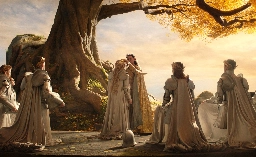
!image extract
"Prime Video’s The Rings of Power explores the Second Age of Middle-earth, which is set millennia before the movies, and follows the story of Sauron’s initial rise to power, the creation of Mordor, and the forging of the great rings... And according to Kate Hawley, the costume designer for Rings of Power, a big part of her job was to find a way to honor what has come before in the world of Middle-earth while charting a new path—one that has never actually been represented onscreen before.
As for the Second Age covered in The Rings of Power, Tolkien never specifically set any of his books during that time period, though he made frequent references to the events that took place during it.
“I think we approached [everything] in a very organic way to relate more to the First and Second Age feeling that we were wanting to create. It has a sort of rawer quality to it,” she says.
“You look at the elves and Valinor and the vanity and everywhere you read there’s talk of jewelry and discussion about it. He talks about elves being born on shores of pearl and he doesn’t necessarily mean that in a literal way, but he’s always talking about ways to reflect the light and those qualities. There’s jewelry everywhere woven into clothes.”
Asked to avoid “a huge amount of prosthetics” when coming up with their ideas for what Second Age dwarves should look like, Hawley and her design team decided to emphasize “character more than anything.”
- The last known photograph of J.R.R. Tolkien is taken on this day in 1973.

The last known photograph of J.R.R. Tolkien is taken, in front of his favourite tree, the Pinus Nigra (named Laocoon), at the Botanic Garden in Oxford, 9th of August 1973.
- The Lord of the Rings: A Musical Tale review – the greatest show on Middle-earth | (The Guardian) archive.ph
> A formidable cast journey through folk via Bollywood to pop – not to mention mountain treks and orc attacks – in a compressed revival of the 2007 musical
> First seen in the UK in 2007 at London’s Theatre Royal Drury Lane – a 1996-seat theatre – the show is revived at the 220-capacity Watermill. This means that Simon Kenny’s design and Anjali Mehra’s choreography are a theatrical equivalent of stunts designed to find how many people can fit in a Mini.
> ...During the long sections inside the tiny theatre, they cram in battles, orc attacks, treks across land, over mountains or through caves and lavish production numbers involving 20 actors or musicians (several performers also play instruments).
> ...speech and score sometimes feel more competitive than complementary.
> The songs, though, move with enjoyable eclecticism through folk via Bollywood to pop, echoing the musical backgrounds of the Indian/Finnish/Anglo-American compositional team of AR Rahman, Värttinä, and Christopher Nightingale.
> But the cast is a blast.
> The original London run is more known for losing money than winning friends. On a stage about 30 times smaller – with budget presumably reduced proportionately – this spectacle of compression, by aiming small, brings big rewards.
- Science Fiction and Fantasy: Tolkien Forever | (WSJ) Archive.is
extract
> “The Battle of Maldon, together with The Homecoming of Beorhtnoth,” edited by Peter Grybauskas. “The Battle” is a fragment of poetry from the end of the first millennium that Tolkien translated from Old English. > > ...the history of Middle-Earth that Tolkien was working on at the same time, “The History of the Hobbit” includes five different “phases” of the book’s creation, many, many plot notes, and a scheme that shows original word choices along with Tolkien’s final text—which was sometimes penned in on top of rubbed-out pencil. > > “Tolkien in the Twenty-First Century: The Meaning of Middle-Earth Today” by Nick Groom. This fascinating book explores “The Hobbit” and “The Lord of the Rings” from their genesis through all the different major adaptations of the Tolkien “legendarium.” > > The reader will learn a great deal about the licensing of Middle-Earth, a realm I thought I already knew fairly well. There were plans for a “Lord of the Rings” film starring the Beatles, for instance, directed by Stanley Kubrick. Another fever dream of a movie would have had Galadriel seduce Frodo, and a 12-minute animated monstrosity released in 1966 has a princess named Mika and a dragon named Slag. > > Each of these very different books offers a brilliant peek or deep dive into very different aspects of the man who changed speculative fiction forever. Choose your own adventure into the world of J.R.R. Tolkien.
- There's no way Tolkien was speaking English here
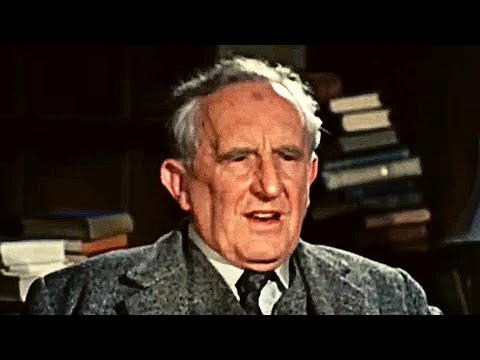
YouTube Video
Click to view this content.

